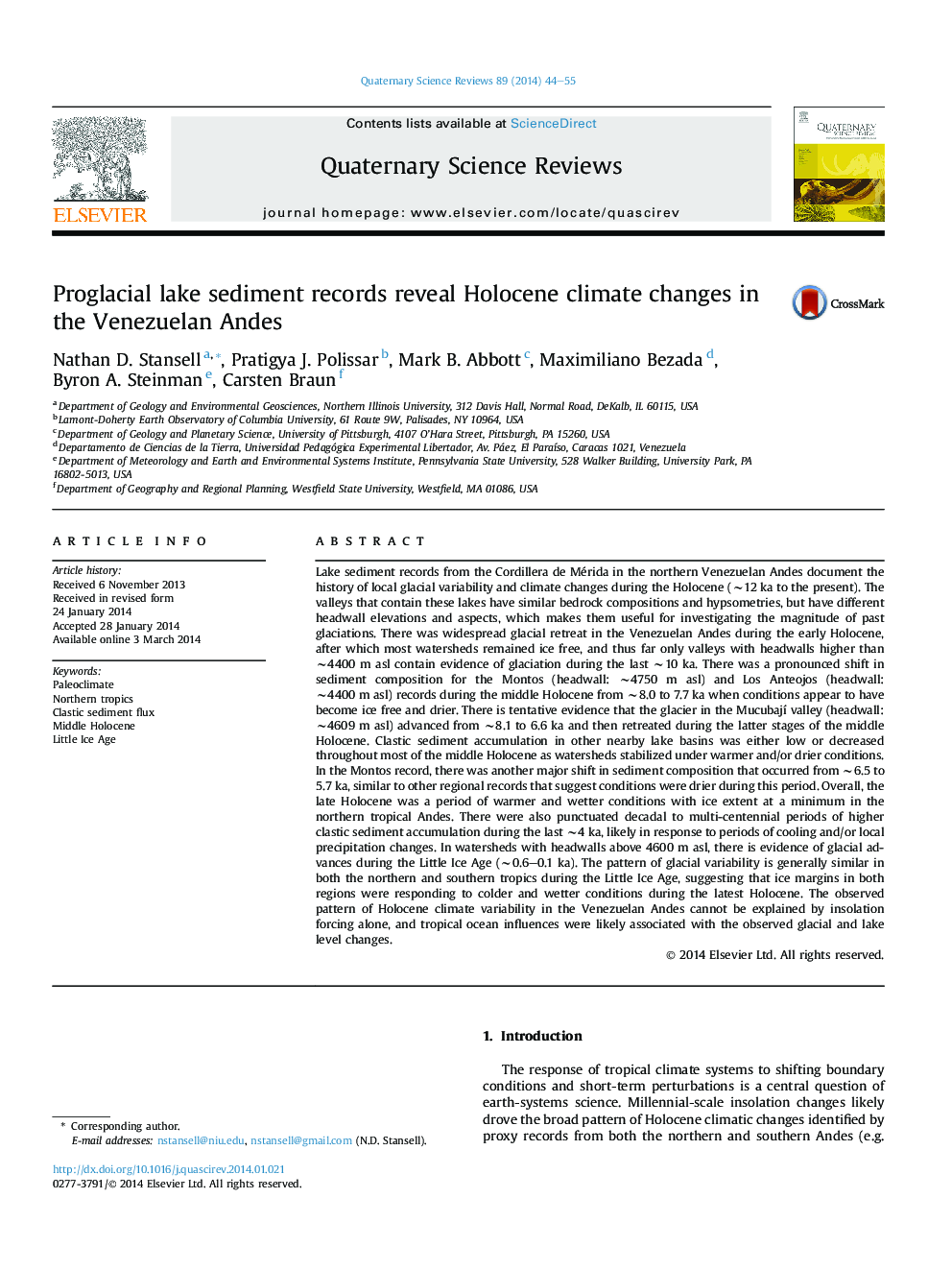| کد مقاله | کد نشریه | سال انتشار | مقاله انگلیسی | نسخه تمام متن |
|---|---|---|---|---|
| 6446417 | 1640845 | 2014 | 12 صفحه PDF | دانلود رایگان |
عنوان انگلیسی مقاله ISI
Proglacial lake sediment records reveal Holocene climate changes in the Venezuelan Andes
ترجمه فارسی عنوان
سوابق رسوبات دریاچه پرولوگیس نشان می دهد تغییرات آب و هوایی گلوتن در آند آندز ونزوئلا
دانلود مقاله + سفارش ترجمه
دانلود مقاله ISI انگلیسی
رایگان برای ایرانیان
کلمات کلیدی
موضوعات مرتبط
مهندسی و علوم پایه
علوم زمین و سیارات
زمین شناسی
چکیده انگلیسی
Lake sediment records from the Cordillera de Mérida in the northern Venezuelan Andes document the history of local glacial variability and climate changes during the Holocene (â¼12 ka to the present). The valleys that contain these lakes have similar bedrock compositions and hypsometries, but have different headwall elevations and aspects, which makes them useful for investigating the magnitude of past glaciations. There was widespread glacial retreat in the Venezuelan Andes during the early Holocene, after which most watersheds remained ice free, and thus far only valleys with headwalls higher than â¼4400 m asl contain evidence of glaciation during the last â¼10 ka. There was a pronounced shift in sediment composition for the Montos (headwall: â¼4750 m asl) and Los Anteojos (headwall: â¼4400 m asl) records during the middle Holocene from â¼8.0 to 7.7 ka when conditions appear to have become ice free and drier. There is tentative evidence that the glacier in the Mucubajà valley (headwall: â¼4609 m asl) advanced from â¼8.1 to 6.6 ka and then retreated during the latter stages of the middle Holocene. Clastic sediment accumulation in other nearby lake basins was either low or decreased throughout most of the middle Holocene as watersheds stabilized under warmer and/or drier conditions. In the Montos record, there was another major shift in sediment composition that occurred from â¼6.5 to 5.7 ka, similar to other regional records that suggest conditions were drier during this period. Overall, the late Holocene was a period of warmer and wetter conditions with ice extent at a minimum in the northern tropical Andes. There were also punctuated decadal to multi-centennial periods of higher clastic sediment accumulation during the last â¼4 ka, likely in response to periods of cooling and/or local precipitation changes. In watersheds with headwalls above 4600 m asl, there is evidence of glacial advances during the Little Ice Age (â¼0.6-0.1 ka). The pattern of glacial variability is generally similar in both the northern and southern tropics during the Little Ice Age, suggesting that ice margins in both regions were responding to colder and wetter conditions during the latest Holocene. The observed pattern of Holocene climate variability in the Venezuelan Andes cannot be explained by insolation forcing alone, and tropical ocean influences were likely associated with the observed glacial and lake level changes.
ناشر
Database: Elsevier - ScienceDirect (ساینس دایرکت)
Journal: Quaternary Science Reviews - Volume 89, 1 April 2014, Pages 44-55
Journal: Quaternary Science Reviews - Volume 89, 1 April 2014, Pages 44-55
نویسندگان
Nathan D. Stansell, Pratigya J. Polissar, Mark B. Abbott, Maximiliano Bezada, Byron A. Steinman, Carsten Braun,
